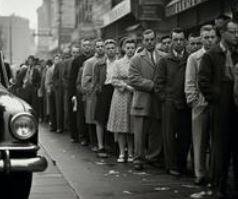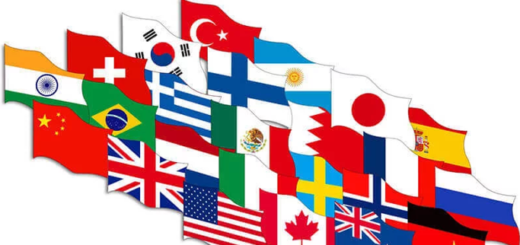The Great Depression and New Deal – America

The Great Depression and the New Deal represent two interconnected and transformative periods in American history, each with significant implications for the country’s economy, society, and government policies.

The Great Depression
Economic Collapse
The Great Depression refers to the severe economic downturn that began with the stock market crash of 1929.
It was characterized by widespread unemployment, business failures, bank closures, and a sharp decline in industrial production.
Global Impact
The Great Depression had far-reaching consequences beyond the United States, affecting economies worldwide.
International trade contracted, leading to a global economic crisis.
Unemployment and Poverty
Unemployment rates soared, reaching as high as 25% in the United States.
Many Americans lost their jobs, homes, and life savings, plunging millions into poverty and despair.
Social Effects
The Great Depression caused immense suffering and hardship for millions of families.
Soup kitchens, breadlines, and Hoovervilles (shantytowns) became symbols of poverty and desperation.
Government Response
Initially, President Herbert Hoover pursued a limited government intervention approach, hoping that the economy would recover on its own.
However, his efforts proved inadequate to address the magnitude of the crisis.
The New Deal
Roosevelt’s Response
Franklin D. Roosevelt, elected president in 1932, implemented the New Deal, a series of programs and reforms aimed at combating the Great Depression.
Roosevelt promised bold and decisive action to address the economic crisis and provide relief to the American people.
Relief, Recovery, Reform
The New Deal consisted of three main goals: relief for the unemployed and those in poverty, economic recovery to restore prosperity, and reform to prevent future economic crises.
Programs such as the Civilian Conservation Corps (CCC), Works Progress Administration (WPA), and Social Security Administration were established to provide jobs, relief, and social safety nets.
Banking and Financial Reforms
The New Deal implemented significant banking and financial reforms to stabilize the economy and restore confidence in the banking system.
The Glass-Steagall Act separated commercial and investment banking, and the Federal Deposit Insurance Corporation (FDIC) was established to insure bank deposits.
Labor and Social Welfare Reforms
The New Deal promoted labor rights and collective bargaining through the National Labor Relations Act (Wagner Act).
Social welfare programs such as unemployment insurance and old-age pensions were introduced to provide security for vulnerable populations.
Legacy and Criticism
The New Deal left a lasting legacy in American politics and society, fundamentally reshaping the role of the federal government in the economy and social welfare.
While praised for providing relief and creating jobs, the New Deal also faced criticism for its deficit spending and perceived overreach of government power.
Overall, the Great Depression and the New Deal marked a watershed moment in American history, prompting significant changes in government policy and reshaping the relationship between the state and its citizens.








